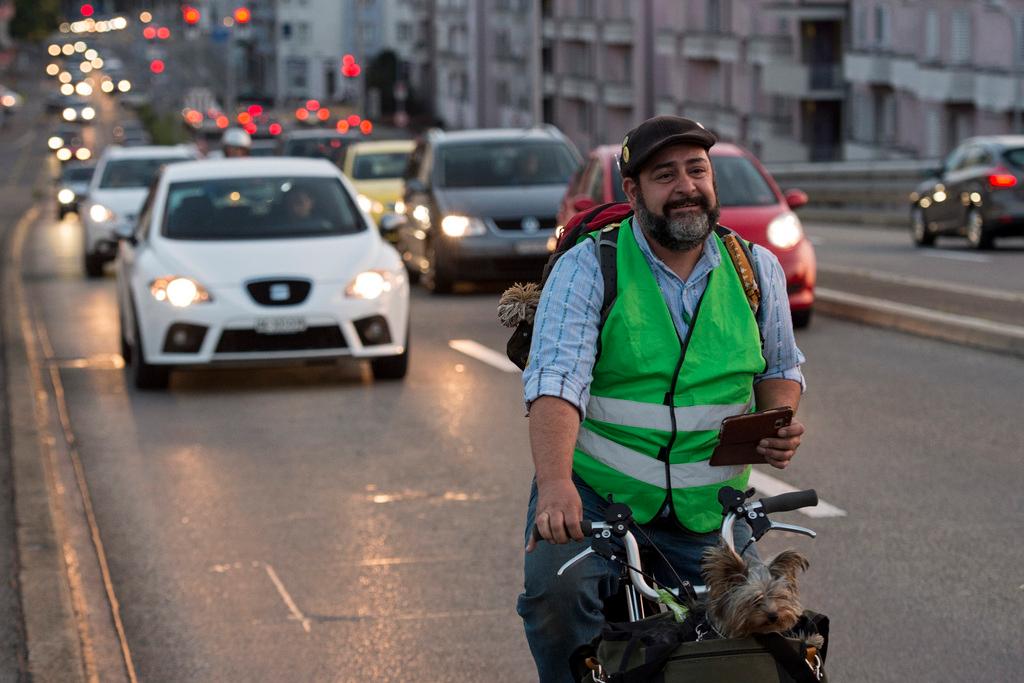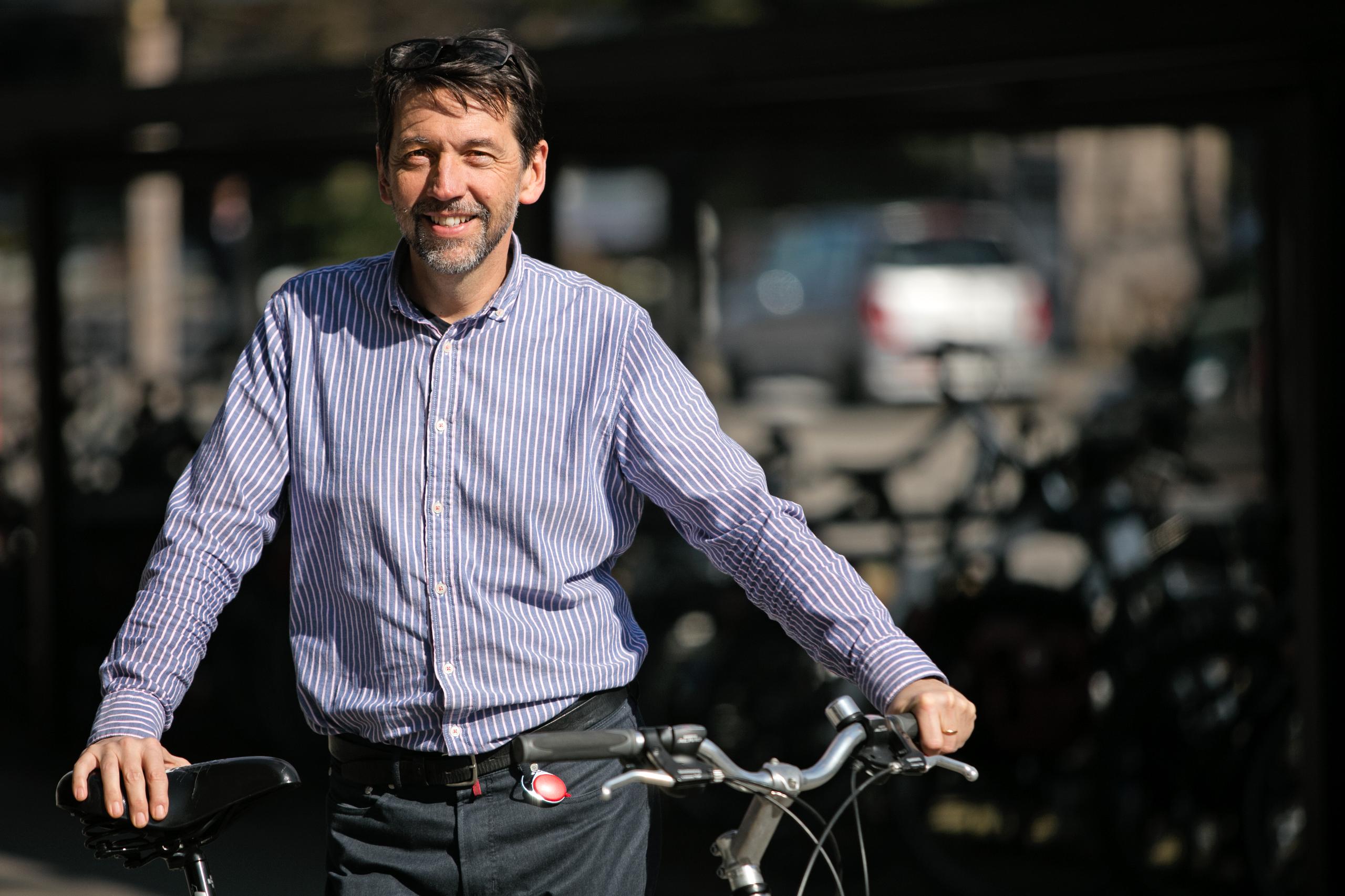
Can Swiss commuters have it all?

If I can only ride one bicycle at a time, then why do I own five? The simple answer: I belong to the middle class of a rich country whose wealth in this context is thanks to ‘intermodality’.

The European Cyclists’ Federation defines intermodality as the easy use of more than one mode of transport during a single journey.
Along with most residents of Switzerland, and other countries of western and northern Europe, these options are available to me and I really take advantage of them.
Each morning, my electric bike powers me up the steep road between my house and the station where I catch the train. A second-hand bike awaits me in the town where I get off. I hop on it for the ten-minute ride to the office along a country lane and back road. My wife and two adult children connect the dots of their commutes with various combinations of car, train, tram, bus and bike.
Switzerland’s truly functioning intermodal system allows us as a family to buy mountain, road and touring bikes – whatever suits our weekend-outing whim – with the money a North American suburban family would typically spend on second, third or even fourth cars.
Yet, the situation for Swiss cyclists could be greatly improved, says Pro Velo, the Swiss Bicycle Advocacy Association.
A survey carried out by Pro Velo two years ago found that general conditions for cyclists were just ok. Unacceptable, among other things, was the lack of sufficient and secure places to lock bikes. One in seven said they had had theirs stolen. That happened to me too in the past year, not to mention the saddle that was wrenched off a few weeks before I had to part company with the whole bike. I then had to find another seat after the one on the replacement two-wheeled clunker I bought was pilfered too.

Direct democracy
Exercising its right under Switzerland’s system of direct democracy, Pro Velo has now collected more than the necessary number of signatures (minimum 100,000) to force a nationwide vote to improve not only the lot of cyclists but, it says, the country as a whole.
It argues an even denser network of safe, interconnected bike lanes as well as more dedicated places to lock up two-wheelers will encourage many among the 50% of the population that don’t cycle to change their commuting/leisure habits. The benefits, the association says, are manifold. Cycling improves one’s health, is environmentally friendly, and in a small, densely populated country like Switzerland, lays claim to much less space than roads or rail.
The initiative wants to see cycling included in an article of the federal constitution that already recognises the government’s duties to maintain footpaths and trails.
The government still has to set a date for a nationwide vote on the issue and it’s not yet clear what kind of opposition there will be to it. That said, Switzerland’s largest motorists’ association, TCS, is sceptical. It questions whether more is required, since hundreds of millions of francs of taxpayers’ money have already been spent in the past few years to improve bicycle and pedestrian infrastructure.
Spoilt commuters
During a recent visit to the Indian cities of New Delhi and Bangalore, where one often has no option but to drive – or be driven – with rush-hour speeds averaging about 5km/h, I realised how spoilt we are in Europe. Maybe everyone just needs to buy a heavy-duty lock like the one I now have. Is that enough?
Neither Switzerland nor its cities rank among Europe’s most cycling friendly (the Netherlands and DenmarkExternal link score highest for bike usage).

More
People’s power for pedal power
The Swiss public transport network is great, but that has become part of the problem. The fact that there is at least one train connection between all towns and cities every half hour has over the years led to many Swiss choosing to live further away from their places of work. The result has been standing room only for many commuters during peak hours, despite more trains. The situation isn’t any better on city trams or buses either, not to mention the congested roads.
Part of the blame for the commuter crowds has been levelled at the increase in the number of foreigners coming to Switzerland to work, drawn by good-paying jobs in a country that was spared much of the anguish of the financial crisis. But that’s another story.
Cyclists are making their voices heard and are now insisting that their way of getting from point A to B becomes a more important pillar of intermodality. Not only in Switzerland.
In London, between 2001 and 2011 (most recent census) the number of commuters riding their bikes to work doubled to 155,000. Even though that only represented one in 35 workers in the city, the number is expected to grow as the city authorities look to improve infrastructure such as creating bike lanes segregated from motor traffic.
Spending time in Toronto last year I was surprised to find bike lanes criss-crossing parts of the downtown area. The city where I lived for ten years, and where wheeling through the narrow spaces between parked cars and streetcar tracks made every commute a dangerous undertaking, seems to be coming of age.
The Swiss could shift into a higher gear if the Pro Velo initiative is approved, and the country could serve as a role model.
Follow Dale Bechtel on Twitter at @dalebechtelExternal link

In compliance with the JTI standards
More: SWI swissinfo.ch certified by the Journalism Trust Initiative















![The four-metre-long painting "Sonntag der Bergbauern" [Sunday of the Mountain Farmers, 1923-24/26] had to be removed by a crane from the German Chancellery in Berlin for the exhibition in Bern.](https://www.swissinfo.ch/content/wp-content/uploads/sites/13/2025/12/01_Pressebild_KirchnerxKirchner.jpg?ver=f05a5a9c)















You can find an overview of ongoing debates with our journalists here . Please join us!
If you want to start a conversation about a topic raised in this article or want to report factual errors, email us at english@swissinfo.ch.